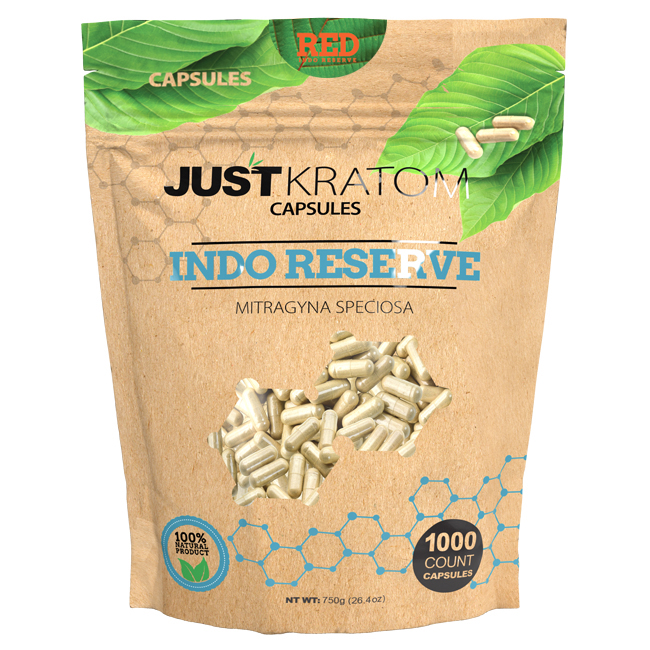Mechanism of Action
Understanding how kratom capsules impact fatigue requires delving into their mechanism of action. Kratom, derived from the Mitragyna speciosa tree, contains alkaloids that interact with various receptors in the brain and body. These interactions can modulate neurotransmitters like dopamine and serotonin, influencing mood, energy levels, and pain perception.
Stimulant Effects
Two primary alkaloids found in kratom, mitragynine and 7-hydroxymitragynine, play key roles in its stimulant effects. Mitragynine binds to opioid receptors, particularly mu-opioid receptors, leading to analgesic and mood-elevating effects.
It also interacts with dopamine receptors, promoting the release of dopamine, a neurotransmitter associated with pleasure, reward, and motivation. This contributes to kratom’s energizing and uplifting effects. 7-hydroxymitragynine, another potent alkaloid, exhibits similar actions, further enhancing these stimulant properties.
Pain Relief
Kratom’s fatigue-busting effects stem from its interaction with neurotransmitters like dopamine and serotonin. Mitragynine, a primary alkaloid in kratom, binds to opioid receptors in the brain, particularly mu-opioid receptors. This binding produces analgesic (pain-relieving) effects and contributes to the mood elevation often reported by users.
Mitragynine also stimulates dopamine release. Dopamine is a neurotransmitter associated with pleasure, reward, and motivation. By boosting dopamine levels, kratom promotes feelings of energy and well-being, combating fatigue.

Neurotransmitter Modulation
Kratom’s effects on fatigue are largely attributed to its modulation of neurotransmitters like dopamine and serotonin. Mitragynine, a key alkaloid in kratom, exerts its influence by binding to opioid receptors, specifically the mu-opioid receptors, located throughout the brain. This interaction triggers pain relief and contributes to the mood elevation frequently associated with kratom use.
Furthermore, mitragynine stimulates the release of dopamine, a neurotransmitter closely linked to pleasure, reward, and motivation. By increasing dopamine levels in the brain, kratom promotes feelings of energy and well-being, effectively combating fatigue and lethargy.
Benefits for Fatigue
Experiencing persistent fatigue can significantly impact daily life. Fortunately, natural remedies like kratom capsules offer a potential solution to combat this debilitating condition. Kratom, derived from the Mitragyna speciosa tree, contains alkaloids that interact with various receptors in the brain and body, influencing neurotransmitters responsible for energy levels, mood, and pain perception.
Increased Energy Levels
Kratom capsules can offer relief from fatigue by impacting neurotransmitter activity. Mitragynine, a key alkaloid in kratom, binds to opioid receptors in the brain, triggering pain relief and mood elevation.
Additionally, mitragynine stimulates dopamine release. Dopamine is crucial for feelings of pleasure, reward, and motivation. Increased dopamine levels contribute to the energizing effects of kratom.
Kratom’s ability to modulate neurotransmitters like dopamine and serotonin makes it a potential natural remedy for fatigue.

Improved Mental Focus
Kratom capsules can be beneficial for combating fatigue due to their impact on neurotransmitter activity. Mitragynine, a primary alkaloid in kratom, interacts with opioid receptors in the brain, leading to pain relief and mood elevation.
Furthermore, mitragynine stimulates the release of dopamine, a neurotransmitter associated with pleasure, reward, and motivation. Increased dopamine levels contribute to feelings of energy and well-being, helping to alleviate fatigue.
By influencing these crucial neurotransmitters, kratom capsules offer a potential natural solution for managing fatigue and improving mental focus.
Reduced Physical Exhaustion
Kratom capsules can be beneficial for individuals experiencing fatigue due to their impact on neurotransmitter activity. Mitragynine, a primary alkaloid found in kratom, interacts with opioid receptors in the brain, leading to pain relief and mood elevation.
Additionally, mitragynine stimulates the release of dopamine, a neurotransmitter associated with pleasure, reward, and motivation. Increased dopamine levels contribute to feelings of energy and well-being, which can help alleviate fatigue.
Dosage and Administration
Understanding how kratom capsules combat fatigue involves exploring their effects on neurotransmitters. Kratom, derived from the Mitragyna speciosa tree, contains alkaloids like mitragynine and 7-hydroxymitragynine that interact with various receptors in the brain.
These interactions can modulate neurotransmitters such as dopamine and serotonin, which play crucial roles in regulating energy levels, mood, and pain perception.
Recommended Doses
The recommended dosage of kratom capsules for fatigue varies depending on individual factors such as body weight, metabolism, and tolerance.
It’s essential to start with a low dose and gradually increase it until the desired effect is achieved. A typical starting dose for fatigue relief may range from 2 to 5 grams of dried kratom leaf or equivalent in capsule form.
Closely monitor your body’s response and adjust the dosage accordingly.
It’s important to consult with a healthcare professional before using kratom, especially if you have any underlying health conditions or are taking other medications.
Capsule vs. Powder Form
Kratom is available in both capsule and powder form. Capsules offer a convenient and pre-measured dosage, making it easier to control intake.
Powdered kratom allows for more flexibility in dosing, as users can adjust the amount consumed based on their individual needs.
However, measuring powdered kratom accurately can be challenging, and it may not be suitable for individuals who prefer a standardized dosage.
Timing of Consumption
The timing of kratom consumption for fatigue management depends on individual preferences and the desired effect. Some people find that taking kratom in the morning helps them feel more energized throughout the day.
Others may prefer to take it mid-afternoon or early evening to combat an afternoon slump or improve focus.
Experimenting with different timings can help determine what works best for individual needs and schedules. It’s important to remember that kratom can have both stimulating and relaxing effects, depending on the dosage and individual sensitivity.
Potential Side Effects and Risks
While kratom capsules show promise in combating fatigue, it’s crucial to be aware of potential side effects and risks associated with their use. These can range from mild discomfort to more serious health concerns, and vary depending on factors such as dosage, individual sensitivity, and overall health.
Gastrointestinal Issues
Gastrointestinal issues are among the most common side effects reported by kratom users. These can include nausea, diarrhea, constipation, stomach cramps, and heartburn.
The severity of these symptoms can vary widely from person to person and depend on factors like dosage and individual tolerance.
Cardiovascular Effects
Cardiovascular effects are a potential risk associated with kratom use. While research is ongoing, some studies suggest that kratom may interact with the cardiovascular system, potentially leading to changes in heart rate, blood pressure, and even arrhythmias.
It’s important to note that these effects are not definitively established and more research is needed to fully understand the long-term cardiovascular implications of kratom use.
Individuals with pre-existing cardiovascular conditions should exercise extreme caution when considering kratom use, as it could exacerbate existing health problems. Consulting with a healthcare professional before using kratom is essential, especially for individuals with any underlying health concerns.
Interactions with Medications
Kratom can interact with various medications, potentially leading to adverse effects or reduced efficacy of the medications. It’s crucial to consult with a healthcare professional before using kratom if you are taking any prescription or over-the-counter drugs, as potential interactions may occur.
Kratom may interact with opioid medications, such as morphine and oxycodone, increasing the risk of respiratory depression and other serious side effects.
It’s also important to be cautious about combining kratom with stimulants like caffeine or amphetamines, as this could lead to heightened effects and an increased risk of adverse reactions.
Kratom may also interact with antidepressants, blood thinners, and medications affecting the central nervous system.

Always prioritize open communication with your healthcare provider about any substances you are using, including kratom, to ensure safe and effective management of your health.
Legal Status and Regulations
The legal status of kratom varies significantly around the world. In some countries, it is completely legal and widely available, while in others, it is banned or strictly regulated. Understanding these legal nuances is crucial for anyone considering using kratom capsules.
Varying Legality Across Jurisdictions
The legal status of kratom varies greatly across jurisdictions. In some countries, kratom is entirely legal and readily accessible, while in others, it faces a complete ban or stringent regulations. This patchwork of legal frameworks makes it essential for individuals to thoroughly research the specific laws governing kratom in their respective regions before considering its use.
In the United States, kratom’s legal standing remains a complex and evolving issue. While it is currently legal at the federal level, several states have enacted bans or restrictions on kratom sales and possession. This patchwork of state-level laws creates uncertainty and makes navigating the legality of kratom a challenge for consumers.
Internationally, the legal status of kratom also varies considerably. Some countries, such as Thailand and Malaysia, have imposed outright bans due to concerns about its potential for abuse and adverse health effects. In contrast, other countries, like India and Indonesia, permit kratom cultivation and consumption within specific limitations.
Given the diverse legal landscape surrounding kratom, it is crucial to stay informed about the specific laws applicable in your location. Consulting official government resources or legal counsel can provide accurate and up-to-date information on kratom’s legal status in your region.
Regulation and Quality Control
The legality of kratom varies significantly across different countries and regions. While it is legal at the federal level in the United States, several states have implemented bans or restrictions on its sale and possession. This patchwork of state-level regulations creates confusion for consumers navigating kratom’s legal status.
Internationally, kratom’s legal standing is also diverse. Some countries, like Thailand and Malaysia, have imposed complete bans due to concerns about potential misuse and health risks. Conversely, other nations, such as India and Indonesia, permit cultivation and consumption of kratom within specific limitations.
Given this complex and evolving regulatory landscape, it is essential for individuals to research the specific laws governing kratom in their jurisdiction before considering its use.
Regulations surrounding kratom vary depending on the location and often lack standardization. Quality control measures also differ significantly, making it crucial for consumers to exercise caution when purchasing kratom products.
In some regions, regulations may address manufacturing practices, labeling requirements, and testing for contaminants. However, enforcement and oversight may be limited, particularly in areas with less stringent controls.
When sourcing kratom capsules, it’s important to prioritize reputable brands known for quality control measures. Look for products that have been independently tested for purity, potency, and the absence of harmful contaminants.
Selecting capsules from suppliers who provide transparent information about their sourcing practices, manufacturing processes, and testing protocols can help ensure a safer and more reliable product.
Consumers should always exercise caution when purchasing kratom products and prioritize reputable suppliers committed to quality control and transparency.
Conclusion
Kratom capsules offer a potential natural solution for combating fatigue by influencing neurotransmitter activity, particularly dopamine and serotonin. While they show promise, it’s essential to understand potential side effects and risks, including gastrointestinal issues and cardiovascular concerns. It’s crucial to consult with a healthcare professional before using kratom, especially if you have any underlying health conditions or are taking other medications.
The legal status of kratom varies greatly across the globe, making it essential for individuals to research the laws in their specific location before considering its use. When sourcing kratom capsules, prioritize reputable brands with transparent sourcing practices and independent testing for purity and safety.
